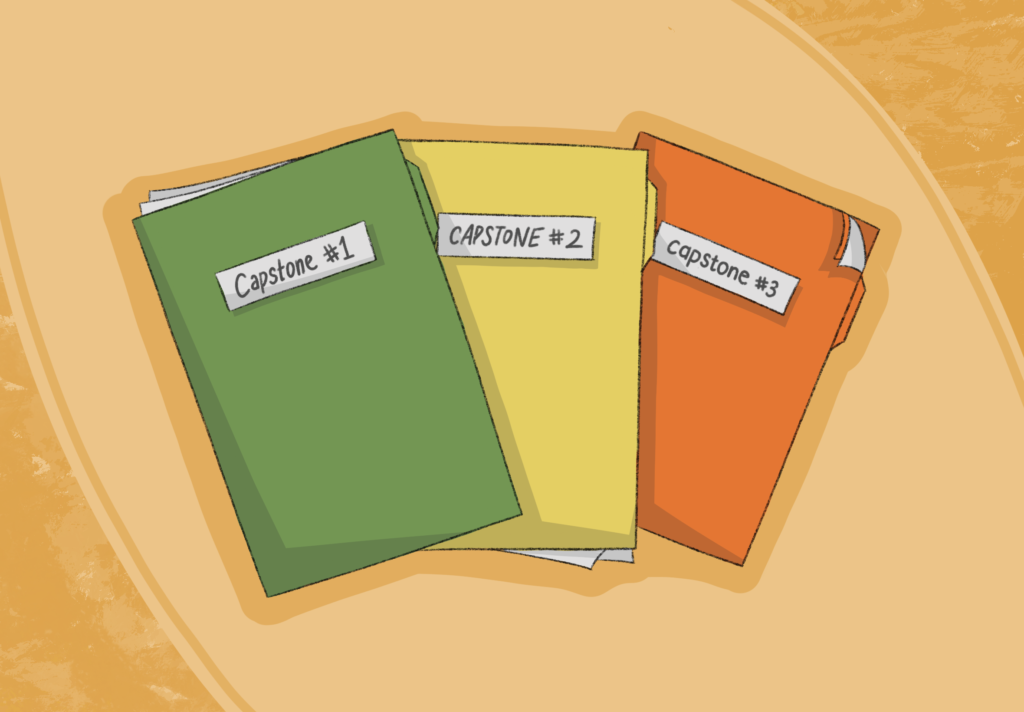Imagine: it’s February, and you are sitting in the sophomore-junior section of the dining hall attempting to admire the snow flurries through the arched windows, but every few seconds, your serenity is interrupted by: “Shoot, I’m about to go bankrupt!” “Do you have RMUs? Please, I really need some.” “It’s September? Already?” Endless banter erupts between students in the different microeconomics sections as onlookers tilt their heads, puzzled by what sounds like a foreign language.
The microeconomics market simulation was created by economics teacher Mr. Ted Hartsoe in the winter of 1986, his second year teaching at Choate. Inspired by a board game he played in high school, Mr. Hartsoe began the simulation in hopes that “students would like some of the competitive element of it, but also learn a little bit about how markets function — the competitive nature, price setting, accounting, business strategies.” In 2001, Mr. Hartsoe also submitted the project to the NASDAQ-sponsored National Council for Economic Education and was recognized as a runner-up for the National Teaching Award.
The simulation, which takes place over the entire term and is comprised of twelve three-day simulation “months,” allows students to operate simulated corporations. Students make offers in raw material (RMU) and finished product (FPU) markets, increase their production capabilities, and take out loans, while competing to make the greatest profit. Students collect their data in spreadsheets, which are later analyzed and culminated in creative annual reports that ask students to apply the abstract microeconomic models they’ve learned throughout the term.
When the simulation first began, students would run across campus before curfew to drop off slips of paper with their RMU and FPU bids every night into an envelope at Mr. Hartsoe’s house. While the simulation has since been adapted to a digital format, students may still break a sweat at the exciting and nerve-wracking nature of the game.
While, in the past, the microeconomics classes would issue a final exam at the end of the term, the economics teachers collectively decided to remove that assessment due to time limitations from changes in the academic calendar and proportionally increased the effect of the market simulation on students’ grades. Currently, 150 of the 700 or 800 points in the term revolve around the simulation, though only 30 of those 150 points reflect corporation profitability. In addition, the lowest grade a student can receive on profitability is 15 points — even if they go bankrupt. Other graded aspects of the simulation include corporation audits, financial statements and statistics, and an annual report.
Tensions run high during the simulation, but most students find the experience fulfilling and enjoyable. “I think the micro simulation is a really good practice tool and learning device to be able to know what it’s like in the real market,” said Heidi Li ’23. From the simulation, she learned more about “taking risks and communicating with other people … and business strategy in general.” Priam Alataris ’22 said, “I’ve had a lot of fun with it. I think it makes the class more engaging for me.”
In the simulation, people dedicate immense efforts to developing creative strategies, sometimes succeeding and other times falling short. A key component of these strategies involves off-market transactions. Christian Askar ’22 was one of the first people to send a mass email to all of the 50 or so microeconomics students this term, offering to sell some of his factories. “I thought it was an effective way to reach out to everyone, and I was able to build connections to people in the class. [Now,] when I need to work off-market, people will reach out to me,” said Askar. Some students grapple with balancing friendships and competitiveness in the simulation. Alataris reflected on one of his deals, where he bought an FPU from Gretchen MacLean ’22 for $5000 (an exceedingly high off-market price). Although he admitted that the deal was “completely unnecessary,” he said that “it felt good to help someone out as a philanthropist.”
Current microeconomics students commonly reach out to students who have participated in the simulation in past years to more thoughtfully develop their strategy. Kenny Tang ’22, winner of the 2019–2020 spring market simulation, gave advice to those currently participating: “Always try to maximize your production and minimize your costs when possible. But, don’t be too greedy when selling your FPUS — or else, they won’t get sold.”
Not everybody relishes the competition. “I have always thought that it would be interesting for one of the psychology classes to observe the market simulation as an experiment in examining human behavior, and personality types,” said Mr. James Stanley, a microeconomics teacher. “There are some people who discover that they really don’t like competition, that the whole process of vying for raw materials with other students makes them profoundly uncomfortable. And other students love it, and get so wrapped up in it, that their sense of reality starts to get confused.”
Many students find the simulation so memorable that they bring it up in future conversation or even decades later, at alumni reunions. Mr. Stanley added, “Often, at term’s end, students say, ‘Okay, now I really get it. Can I do it again?’”




